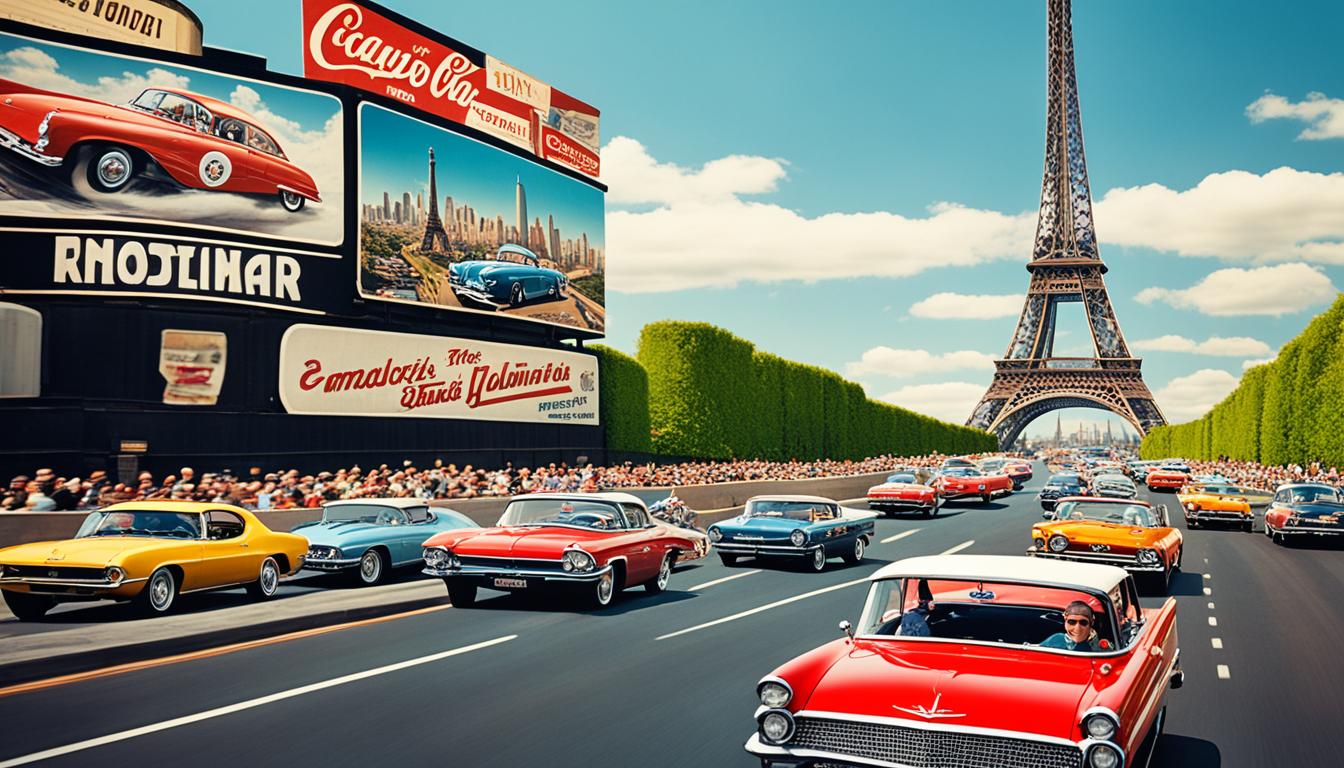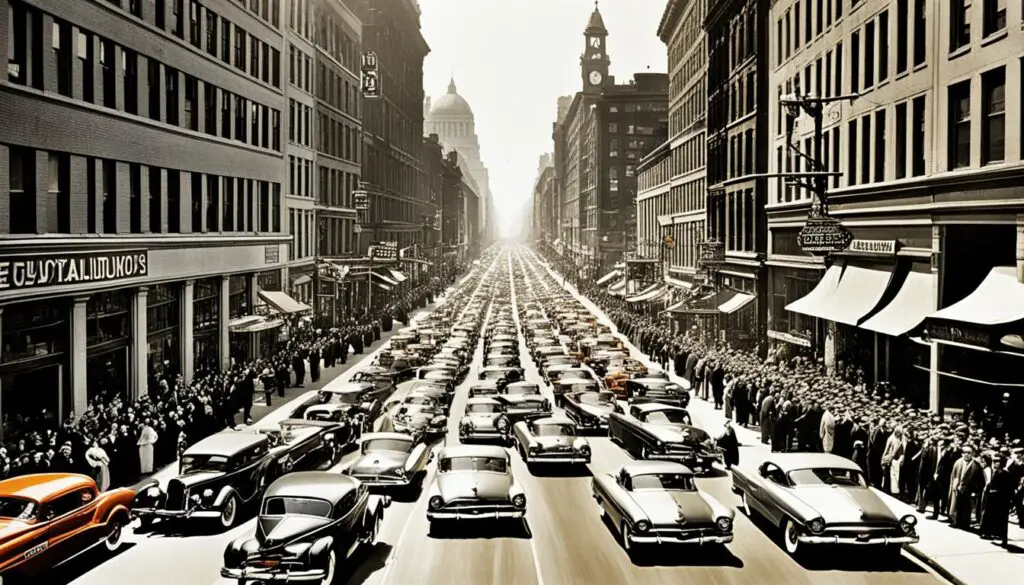
Journey Through Time: Delve into the Fascinating Car Culture History
Welcome to a captivating exploration of car culture history, where we embark on a journey through time to uncover the evolution of society and technology through the lens of automotive passion. Cars have long been more than just a mode of transportation; they symbolize freedom, status, and individuality. In the United States, specifically, car culture has played a pivotal role in shaping the global automotive landscape.
As we delve into the rich tapestry of car culture history, we discover how the rise of the automobile industry in the early 20th century marked a significant turning point. With the introduction of Henry Ford’s Model T Ford in 1908, cars became more accessible to the masses, leading to a surge in ownership and the birth of car customization.
Customization, racing, and the formation of car clubs became integral components of car culture from its very inception. Car enthusiasts reveled in the opportunity to express their personal style and identity through their vehicles, making modifications that turned cars into mobile works of art. Car clubs provided spaces for like-minded individuals to come together, fostering a sense of community, and organizing races and gatherings to showcase their prized automobiles.
Key Takeaways:
- Car culture history reflects the evolution of society and technology.
- Cars have been symbols of freedom, status, and individuality throughout history.
- The United States has played a significant role in shaping car culture globally.
- Customization, racing, and car clubs have been integral parts of car culture since its inception.
- Movies, music, and popular culture have influenced the development of car culture.
The Early Days: Birth of the Car Culture
The early days of car culture can be attributed to the revolutionary emergence of the automobile industry. With the introduction of the Model T Ford by Henry Ford in 1908, transportation was forever changed, making cars more accessible to the masses and setting the stage for the development of a vibrant car culture.
As ownership of cars became more common, customization quickly gained popularity. Car enthusiasts wanted to express their personal style and identity through their vehicles, leading to a surge in custom paint jobs, unique modifications, and personalized accessories. This trend not only showcased individuality but also fueled creativity and innovation within the automobile industry.
Car clubs emerged as integral components of the early car culture. These clubs provided like-minded individuals with a sense of community and camaraderie, offering spaces where car enthusiasts could gather, share knowledge, and showcase their prized automobiles. Car clubs also served as platforms for organizing races, where participants could put their modified vehicles to the test and compete against fellow car enthusiasts in thrilling events.
Racing, in particular, became a dominant aspect of the car culture during this time. Events like the iconic Indianapolis 500 captured public attention and became symbols of automotive prowess. Racing not only highlighted the speed and performance of cars but also fostered a spirit of healthy competition, pushing car manufacturers to continually improve and push the boundaries of automotive technology.
The early days of car culture were marked by the rise of the automobile industry, which brought about accessibility, customization, and the formation of car clubs. These elements laid the foundation for a vibrant car community that would evolve and expand in the years to come.
Early Car Culture Milestones
To gain a deeper understanding of the early car culture and its impact, let’s take a look at some significant milestones:
| Milestone | Description |
|---|---|
| 1908 | Introduction of the Model T Ford, making cars more accessible to the masses |
| 1920s | Rise of the custom car culture, fueled by the desire for personalization and self-expression |
| 1930s | Formation of car clubs, providing car enthusiasts with a sense of community and opportunities for socializing and racing |
| 1940s | Impact of World War II on the car culture, with limited production and rationing affecting the automotive industry |
| 1950s | Birth of hot rodding and drag racing, taking car customization and racing to new levels of popularity |
The early days of car culture were characterized by the rise of the automobile industry, customization, and the establishment of car clubs. These elements set the stage for the ever-evolving journey of car culture, shaping the way we view and interact with automobiles today.

Modern Era: Redefining Car Culture
The modern era has witnessed a significant transformation in car culture, with movies, music, and popular culture playing a pivotal role in shaping its evolution. Films like the iconic “The Fast and the Furious” franchise have ignited a passion for cars among enthusiasts, showcasing thrilling street racing, adrenaline-pumping car modifications, and high-speed action that captivates audiences worldwide.
Within this modern car culture, certain cars have emerged as true icons, representing the essence of American automotive passion. The Ford Mustang, Chevrolet Camaro, and Dodge Challenger have become synonymous with power, performance, and style. These legendary vehicles continue to inspire car enthusiasts, embodying the spirit of American car culture and reminding us of the love affair between cars and their owners.
Car shows have become an integral part of the modern car culture, providing a platform for automakers to unveil their latest innovations and concepts. Events like the SEMA Show and the Detroit Auto Show draw car enthusiasts from around the globe, showcasing cutting-edge technologies, futuristic designs, and the latest trends in the automotive industry. These shows serve as a celebration of the artistry, craftsmanship, and engineering behind every vehicle, fostering a sense of community and camaraderie among car enthusiasts.
In today’s digital age, social media and online communities have revolutionized the way car enthusiasts connect and share their passion. Through virtual platforms, car enthusiasts can exchange knowledge, experiences, and stories, fostering a sense of unity and deepening their appreciation for car culture. This global network allows enthusiasts from different corners of the world to come together, united by their love for iconic cars, thrilling movies, and unforgettable car shows.
In conclusion, the modern era has reshaped car culture through the influence of movies, the prominence of iconic cars, and the vitality of car shows. As car culture continues to evolve, driven by technological advancements, environmental concerns, and shifting societal values, it remains a fascinating journey through time, symbolizing our enduring fascination with automobiles.
FAQ
How has car culture evolved over time?
Car culture has evolved alongside societal and technological changes. It has transformed from a symbol of freedom and individuality to encompass various aspects such as customization, racing, and car clubs. The influence of movies, music, and popular culture has also played a significant role in shaping car culture.
What was the impact of the automobile industry on car culture?
The emergence of the automobile industry, particularly with the introduction of the Model T Ford by Henry Ford in 1908, revolutionized transportation and made cars more accessible to the masses. This accessibility led to a surge in car ownership, which in turn fueled the growth of car culture.
How did car customization become a part of car culture?
As more people began owning cars, customization became popular as a way to express personal style and identity through vehicles. Individuals started modifying their cars with various aftermarket accessories and alterations, turning them into unique representations of their owners.
What role did car clubs play in car culture?
Car clubs provided a sense of community and camaraderie among car enthusiasts. They created spaces for socializing, racing, and showcasing prized automobiles. Car clubs became integral to car culture, fostering connections and friendships among like-minded individuals passionate about cars.
How did movies and popular culture influence car culture?
Movies, such as “The Fast and the Furious” franchise, have greatly influenced car culture by showcasing street racing, car modifications, and high-speed action. These movies have inspired a new generation of enthusiasts and contributed to the fascination with cars and their customization.
Can you name any iconic cars that have become symbols of American car culture?
Some iconic cars that have played a significant role in American car culture include the Ford Mustang, Chevrolet Camaro, and Dodge Challenger. These vehicles have gained legendary status and continue to inspire enthusiasts around the world.
What are some notable car shows related to car culture?
Car shows such as the SEMA Show and the Detroit Auto Show attract car enthusiasts from around the world. These events provide platforms for automakers to unveil their latest innovations, concepts, and groundbreaking designs, showcasing the cutting-edge developments in the automotive industry.
How has social media contributed to car culture?
The rise of social media and online communities has created a global network of car enthusiasts. It has facilitated the sharing of knowledge, experiences, and a deeper appreciation for car culture. Through social media platforms, enthusiasts can connect, discuss, and showcase their love for cars, strengthening the community.
What factors continue to shape car culture history?
Car culture history continues to evolve due to technological advancements, environmental concerns, and shifting societal values. The development of electric and autonomous vehicles, the increasing emphasis on sustainability, and the desire for safer and more efficient transportation all play a part in shaping the future of car culture.
